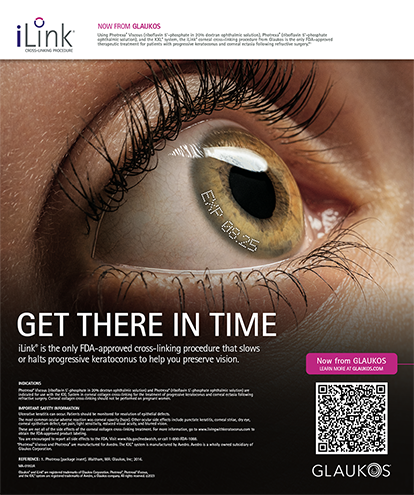It is not unusual to view professional success through the prism of a dollar sign, but an equally valid method is to gauge the impact of a job well done. When Founding Partner Gregg J. Berdy, MD, FACS, ponders the success of Ophthalmology Associates, the general ophthalmology practice that he opened in St. Louis in 1991, he is more inclined to describe the joy his patients experience in response to procedures that improve their vision than to talk about profit and loss or return on investment.
This midsized group practice offers cornea, external disease, cataract, and refractive surgery. Approximately 125 patients are seen daily at its three locations. It would be easy to rattle off figures that define his practice as a success, but Dr. Berdy said revenue is not his or the practice’s main focus.
“When I perform cataract surgery and see the positive impact that it has on my patients, that is incredibly gratifying,” he said. “The icing on the cake is that we get to make a living doing it, and [we] make a good living at that.”
In the Beginning
Practicing ophthalmology has not always been a piece of cake, Dr. Berdy acknowledged. After an unfulfilling stint as a cornea specialist for a group practice early in his career, he took out some loans, hung out a shingle, and threw himself into doing whatever it took to establish his own practice. Dr. Berdy is the first to admit that he started out by doing the jobs that others passed on, including treating patients who were turned away elsewhere, in an effort to build his practice.
“My first day, I had four patients, and the second day, I had eight, but that is not enough to carry a practice,” he recounted. “When a local hospital offered me the opportunity to become a rural outreach physician, I took it. I would drive 60 to 100 miles twice a week to rural clinics, in the hinterlands, and earn enough money to support my practice, which was growing.”
The next step to establishing himself in the community was getting staff privileges at 19 hospitals throughout St. Louis. “I took everybody’s calls because I needed patients; I was basically never home,” he said. “During that same time, my wife, who is also a physician, would hand out my business cards to anyone she heard was looking for an ophthalmologist, and she and I would attend health screenings and other events where we could both market our practices.”
After about 7 years of dividing his time among rural outreach, consulting at a handful of other practices, responding to emergency room calls, and teaching at the universities in town, he decided to focus on his own practice. “I teamed up with another ophthalmic surgeon,” Dr. Berdy said. “He sent me his cataract patients, and I sent him my retina and oculoplastics patients. Then we merged, and I bought him out, so I then had his whole patient population.”
This maneuver brought Dr. Berdy to about 65% or 70% of what he considered his potential capacity. Then the other ophthalmologist died, Dr. Berdy was at 110% capacity, and he needed help.
“Finding someone who has similar ethics and is on the same page with respect to how staff and patients should be treated is not an easy task,” he said. Ultimately, he found that simpatico partner in Ranjan P. Malhotra, MD, FACS, who has been with Dr. Berdy since 2000. Two optometrists, Robert Brusatti, OD, and Andrew Royer, OD, round out the team that splits its time among Ophthalmology Associates’ three locations (Figure 1).
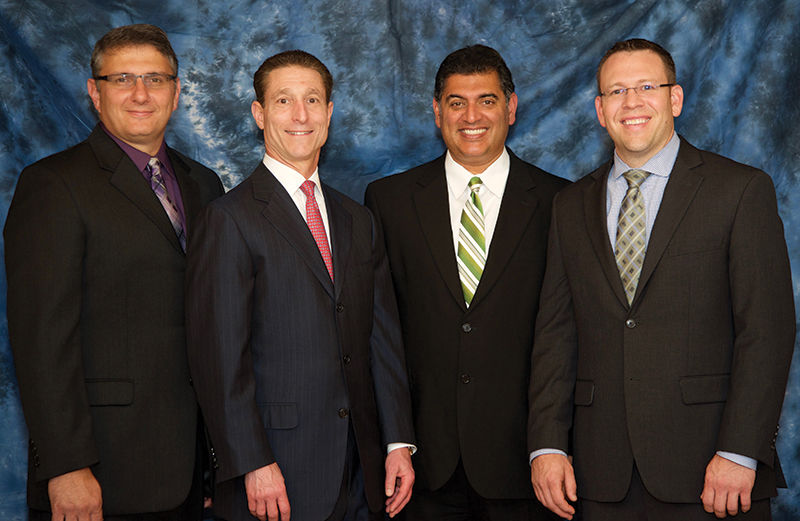
Figure 1. The Ophthalmology Associates team (from left): Dr. Brusatti, Dr. Berdy, Dr. Malhotra, and Dr. Royer.
Satisfaction Guaranteed
Dr. Berdy’s management philosophy is based on ensuring that his patients and staff are happy and satisfied.
“Excellence is about more than clinical outcomes,” he asserted. “We deliver great care, but we strive for excellence in the way we treat people. I want to be kind, I want to be humble, and I want to be empathetic to our patients, but that is not enough. I have to make sure the staff is happy as well because, if the staff is not happy, then everything crumbles.”
Dr. Berdy’s recipe for excellence is the product of natural instinct and lessons learned, but it could be straight out of the playbook of the entrepreneurial steps-to-success penned by fellow St. Louis native Danny Meyer.
Mr. Meyer made a name for himself as a successful restaurateur at New York City eateries such as Union Square Café and Grammercy Tavern and as an entrepreneur with the ubiquitous Shake Shack. In his memoir, Setting the Table: the Transforming Power of Hospitality in Business,1 Mr. Meyer wrote about the keys to his success, which he said are based on “enlightened hospitality,” or the combination of delivery of a product and how its delivery makes the recipient feel.
In his book, Mr. Meyer stressed that the first and most important application of hospitality is to the people who work for you (Figures 2 and 3) and then, in descending order of priority, the guests, the community, the suppliers, and the investors (see What’s Your Hospitality Quotient).

Figure 2. Doctors and staff came together to safely watch the total solar eclipse in August 2017.
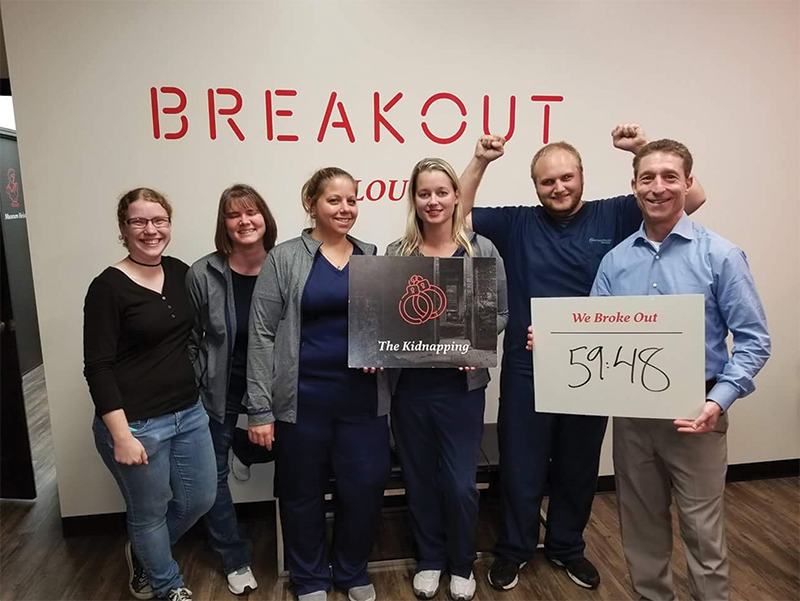
Figure 3. Employees enjoy team outings together such as this one to an escape room.
What's Your Hospitality Quotient
In an interview with CRST, Ophthalmology Associates’ founding partner, Gregg J. Berdy, MD, FACS, stressed the importance of empowering employees to do their jobs well, with the ultimate goal of making patients feel good about their eye care experience. At his general ophthalmology practice in St. Louis, Dr. Berdy’s staffing ideology is similar to that espoused by noted restaurant industry entrepreneur Danny Meyer.1 Mr. Meyer coined the term hospitality quotient to describe the traits embodied by those who are happiest when their energy is spent making other people feel better. The term applies to Dr. Berdy; his partner, Ranjan P. Malhotra, MD, FACS; their team of optometrists, Robert Brusatti, OD, and Andrew Royer, OD; and Ophthalmology Associates’ 40-plus other employees.
If you think your practice could benefit from hiring employees who have a high hospitality quotient, look for these six traits:
1. Kindness and Optimism
The positivity coming from kind and optimistic employees is an important part of a great work environment. Skeptical employees do not help a company thrive.
2. Intellectual Curiosity
The intellectually curious look at every day as an opportunity to learn something they did not know before. If your employees think they know it all, that leaves little room for improvement and growth.
3. Work Ethic
Having employees who are not only skilled but also eager to put time and effort into what they do can make all the difference.
4. Empathy
An empathetic employee cares how he or she makes others feel. Whether with a customer or patient or with a fellow employee, someone’s ability to connect with others is a powerful skill.
5. Self-Awareness
Employees who are self-aware may have a difficult day, but they will be able to put it behind them when they are at work and not take it out on their coworkers or the practice’s customers or patients.
6. Integrity
Integrity is doing the right thing even when no one is looking and even when it is not in one’s self-interest. An employee with high integrity is someone an employer can trust and rely upon.
“By putting your employees first,” Mr. Meyer wrote, “you have happier employees, which then leads to a higher hospitality quotient, and a higher hospitality quotient leads to happy customers, which benefits all the stakeholders. The cycle is virtuous, not linear, because the stakeholders all impact each other.”
Dr. Berdy remarked that, when he read the book, it was as if he had been following Mr. Meyer’s recipe all along. “The thing that resonated deeply with me was how Meyer wrote that the most important people in your life are your family, your employees, and then your clients,” Dr. Berdy said. “The point is, you take care of your employees, you take care of your clients, but you can’t put your family on the back burner. That might seem obvious, but it happens more often than we physicians like to admit when we overextend ourselves during those early years establishing a practice.”
The Right Path
“I started out with three employees, including myself, and now Ophthalmology Associates comprises two ophthalmic surgeons, two optometrists, and 48 employees,” Dr. Berdy said. In addition to the practice’s steady growth, Drs. Berdy and Malhotra have invested in the development of an ambulatory surgery center that provides open access to 36 ophthalmic surgeons; 16,000 procedures were performed there in 2017 (Figure 4).
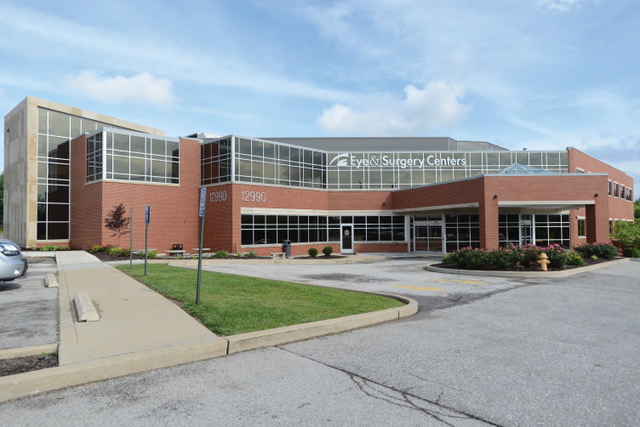
Figure 4. Ophthalmology Associates and its affiliated surgery center make up the Eye & Surgery Centers.
“I did my own books up until a couple of years ago because I could not trust anybody else to be as conscientious as me, but over the years I realized that you have to surround yourself with people who are as good as you or better at doing specific jobs and then empower them to do their jobs well,” Dr. Berdy said. “When you finally embrace that, you are on the right path.”
CRST asked Dr. Berdy more about his practice, and his hospitality quotient shines through in his responses. An edited version of some of Dr. Berdy’s remarks follows.
CRST: What factors have played a role in your practice’s success?
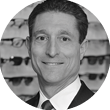
Dr. Berdy: One of the things that helped grow this practice was that we did not turn anyone away. I was willing to do things that other ophthalmologists were not interested in doing, such as treating dry eye patients.
Dry eye centers of excellence are springing up all over today, but there was a time when these patients were considered a nuisance. We did not have a lot of options for treating them, nor did we have dedicated diagnostic technology. We embraced those patients, we helped them feel better, and they left happy. Those patients have been a steady source of referrals throughout the years.
We were also active in early refractive surgery. I was one of four surgeons in St. Louis who were involved in the initial PRK studies in 1991. Almost everyone else was still doing RK, so it was a bit of luck to be involved in laser vision correction at such an early stage.
CRST: What other clinical studies has the practice participated in?
Dr. Berdy: This practice has been involved in 200-plus clinical trials, and my partner and I have been the principal investigators. That is a great niche because it reinforces the need to do excellent work, as all of the data are scrutinized.
If the FDA or the sponsoring companies give your practice a bad review, it is unlikely that you will get chosen again. Being chosen to participate over and over again telegraphs the message to the community that your practice is top-notch.
CRST: How do you maintain a sense of personal patient care in a busy practice?
Dr. Berdy: We make sure that every patient has all of his or her questions answered before leaving. Sometimes, I will have a patient who wants to talk for 10 or 15 minutes, and I will give him or her that time. Most patients only have one or two quick questions, so it balances out. Also, we like to educate our patients, so we talk a lot about diagnosis and causes of disease and how to make things better. We want to make sure people understand their diagnosis and treatment plan, as opposed to just handing them a scrip and saying, “Do this.”
CRST: What role does advertising play in the practice’s steady growth?
Dr. Berdy: We have a dedicated advertising agency that advises us and carries out all of our campaigns. In the early days, we had a small advertising budget, it was all dedicated to LASIK, and it was all earmarked for print. For the past 15 years, we have been in radio and television all over St. Louis, and we advertise dry eye treatment, ocular allergies management, cataract surgery, and refractive surgery, among other things. Up to 25% of our appointments are a result of patients having been exposed to our advertising.
CRST: Does having optometrists on staff limit your ability to get referrals from community optometrists?
Dr. Berdy:No, not at all, because we are committed to sending patients back to their referring doctors. This is a close-knit community; you can’t sneeze without someone knowing about it, so we make it clear to patients that it is not appropriate for them to buy eyeglasses from our optical shop (Figure 5) if they were referred to us by an optometrist. I make an effort to treat everyone with respect—the patients and the referring doctors. Remember, it’s not just about the services we provide; it’s also about how they feel about the service they receive.
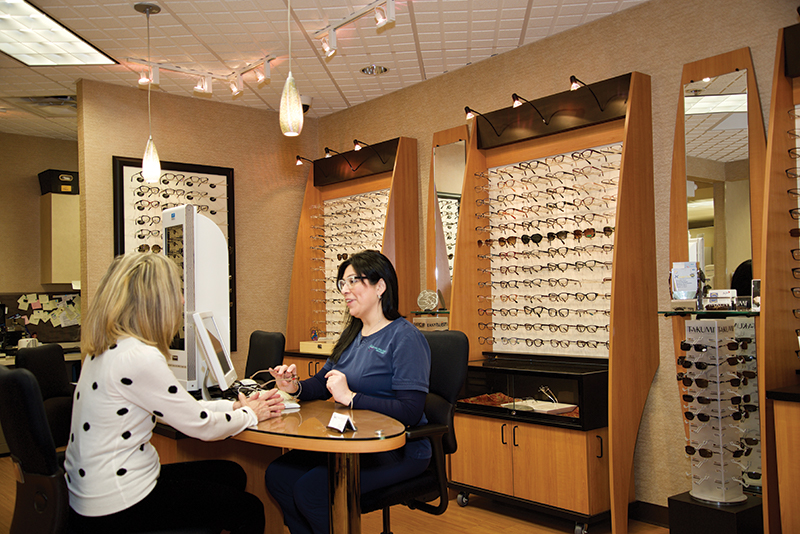
Figure 5. Ophthalmology Associates is a full-service general practice that includes a busy optical shop.
1. Meyer D. Setting the Table: the Transforming Power of Hospitality in Business. New York, NY: Harper Collins; 2008.




